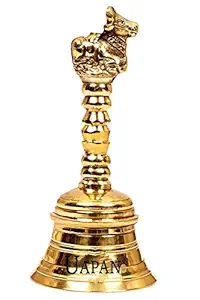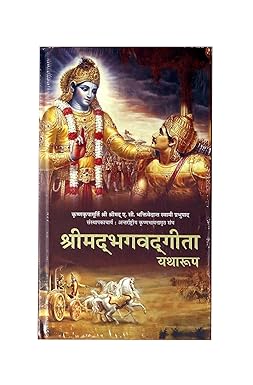हरे कृष्ण हरे कृष्ण
कृष्ण कृष्ण हरे हरे
हरे राम हरे राम
राम राम हरे हरे ॥1॥
हरे कृष्ण हरे कृष्ण,
कृष्ण कृष्ण हरे हरे,
हरे राम हरे राम,
राम राम हरे हरे ॥2॥
सदा इस मंत्र को जपते रहो,
हरी चरण में प्रेम करो,
भक्ति के मार्ग पर चलो,
श्याम सुंदर को याद करो ॥3॥
Overview of "Hare Krishna Hare Rama Maha Mantra"
Title & Meaning
The 'Hare Krishna Hare Rama Maha Mantra' is a sacred chant invoking the names of Lord Krishna and Lord Rama to bring peace, devotion, and spiritual awakening.
Origin & Historical Background
The mantra originates from ancient Vedic texts and has been popularized globally by the Bhakti movement and ISKCON.
Language & Meaning
Composed in Sanskrit, the mantra’s literal meaning is an invocation of Lord Krishna and Lord Rama to purify the mind and heart.
Popularity & Spread
Widely chanted in temples, homes, and meditation centers worldwide, this mantra is central to devotional practices.
Cultural Impact
The mantra has influenced music, meditation, yoga practices, and devotional gatherings across the world.
Lyrics Structure & Themes
Devotional Invocation
The mantra itself is a direct invocation, repeated for meditation, devotion, and spiritual connection with the divine.
Repetitive Chanting
Repetition of the mantra is a core practice to enhance focus, devotion, and spiritual experience.
Imagery & Symbolism
Symbolizes surrender, divine love, and the ultimate connection with Krishna and Rama in every chant.
Community & Togetherness
Chanting in groups strengthens community devotion, creating a collective spiritual energy.
Emotional Resonance
Evokes peace, joy, spiritual elevation, and a sense of divine presence among practitioners.
Musical & Performance Elements
Melody & Rhythm
Performed with harmonium, mridangam, tablas, and chanting, creating a harmonious and meditative atmosphere.
Tempo & Dynamics
Typically sung in a moderate tempo, gradually increasing in intensity to enhance the devotional mood.
Live vs Recorded Renditions
Live kirtans feature audience participation and call-and-response chanting, while recorded versions are polished for listening.
Dance & Movement
Devotees may perform gentle swaying, clapping, or kirtan dances in alignment with the rhythm of the mantra.
Audience Participation
Encourages collective chanting and interaction, enhancing spiritual engagement and community bonding.
Festival & Cultural Significance
Spiritual Festivals
Chanted prominently during Janmashtami, Rama Navami, and other Krishna or Rama-related festivals.
Spiritual Significance
Represents devotion, surrender, and meditation on Lord Krishna and Lord Rama, purifying the mind and soul.
Global Influence
Popularized globally by ISKCON and Bhakti movement leaders, influencing music, chanting, and spiritual practices.
Community Bonding
Fosters unity among devotees and spiritual seekers through collective chanting sessions.
Emotional & Mental Benefits
Aids in reducing stress, enhancing focus, and generating inner peace through devotional repetition.
How to Use & Share
Translations & Transliteration
Provide translations and transliterations for non-Sanskrit speakers to understand the meaning and chant correctly.
Audio / Video Embeds
Embed kirtan videos, audio tracks, and guided chanting sessions to engage users effectively.
Printable Lyrics & PDFs
Offer the mantra in printable format for meditation, chanting, or devotional sessions at home or in groups.
Performance & Chanting Tips
Provide guidance on pronunciation, rhythm, and melodic chanting for spiritual enhancement.
SEO & Social Media
Optimize with keywords like Hare Krishna Maha Mantra, Hare Rama Mantra, Krishna Bhajan, Spiritual Chant; include social sharing options.
The 'Hare Krishna Hare Rama Maha Mantra' is a sacred chant invoking the names of Lord Krishna and Lord Rama to bring peace, devotion, and spiritual awakening.
The mantra originates from ancient Vedic texts and has been popularized globally by the Bhakti movement and ISKCON.
Composed in Sanskrit, the mantra’s literal meaning is an invocation of Lord Krishna and Lord Rama to purify the mind and heart.
Widely chanted in temples, homes, and meditation centers worldwide, this mantra is central to devotional practices.
The mantra has influenced music, meditation, yoga practices, and devotional gatherings across the world.
The mantra itself is a direct invocation, repeated for meditation, devotion, and spiritual connection with the divine.
Repetition of the mantra is a core practice to enhance focus, devotion, and spiritual experience.
Symbolizes surrender, divine love, and the ultimate connection with Krishna and Rama in every chant.
Chanting in groups strengthens community devotion, creating a collective spiritual energy.
Evokes peace, joy, spiritual elevation, and a sense of divine presence among practitioners.
Performed with harmonium, mridangam, tablas, and chanting, creating a harmonious and meditative atmosphere.
Typically sung in a moderate tempo, gradually increasing in intensity to enhance the devotional mood.
Live kirtans feature audience participation and call-and-response chanting, while recorded versions are polished for listening.
Devotees may perform gentle swaying, clapping, or kirtan dances in alignment with the rhythm of the mantra.
Encourages collective chanting and interaction, enhancing spiritual engagement and community bonding.
Chanted prominently during Janmashtami, Rama Navami, and other Krishna or Rama-related festivals.
Represents devotion, surrender, and meditation on Lord Krishna and Lord Rama, purifying the mind and soul.
Popularized globally by ISKCON and Bhakti movement leaders, influencing music, chanting, and spiritual practices.
Fosters unity among devotees and spiritual seekers through collective chanting sessions.
Aids in reducing stress, enhancing focus, and generating inner peace through devotional repetition.
Provide translations and transliterations for non-Sanskrit speakers to understand the meaning and chant correctly.
Embed kirtan videos, audio tracks, and guided chanting sessions to engage users effectively.
Offer the mantra in printable format for meditation, chanting, or devotional sessions at home or in groups.
Provide guidance on pronunciation, rhythm, and melodic chanting for spiritual enhancement.
Optimize with keywords like Hare Krishna Maha Mantra, Hare Rama Mantra, Krishna Bhajan, Spiritual Chant; include social sharing options.


